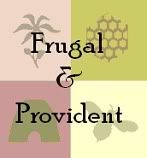For whatever reason, you may find yourself at some time with the need to purify water. Remember that this should be used only in an absolute last resort, and that the best idea is to store an adequate amount of water for your family.
There are many ways water can be contaminated, so often the best way to purify water is by using more than one method. I will outline several methods below, and explain what they best eliminate.
Filtration
- Using a coffee filter or layers of paper towels, pour water through.
- Collect water in a bowl underneath.
- Repeat several times.
Pros
-Filters out sediment and hard metals
-Easy
Cons
-Doesn't remove micro-organisms.
Boiling
- In a large pot or kettle, bring water to a rolling boil.
- Boil for 1 minute.
- Let cool.
- You may need to add oxygen back into the water. This can be done by passing the water back and forth between two clean containers.
Pros
-Kills most micro-organisms.
Cons
-Does not remove large particles, chemicals, or sediment. You will need to use filtration first.
-Requires a cooking source.
Chlorination
- First, make sure you are using only regular household bleach. Do not use scented, colorsafe, or bleach with other cleaners. It is also recommended that you use a new bottle of bleach, as old opened bleach loses potency with time.
- Add 16 drops (1/8 tsp) of bleach to 1 gallon of water.
- Stir.
- Let stand for 30 min.
- The water should have a slight bleach odor. If it does not , repeat steps 1-3, and let stand for an additional 15 min.
- If it still does not smell of bleach, discard the water, and find another water source.
Pros
-Kills most micro-organisms.
Cons
-Does not remove large particles, chemicals, or sediment. You will need to use filtration first.
-Concerns over potency of bleach over a few days.
Distillation
- Fill a pot half-way with water.
- Tie a cup (that will not melt) to the handle of the pot's lid. (See image below)
- The cup should hang right-side up when the lid is upside down. Also, make sure the cup does not dangle in the water.
- Boil the water for 20 min.
- The water that drips from the lid into the cup is distilled.
Pros
-Kills micro-organisms (more than boiling or chlorination).
-Removes heavy metals, salts, and sediment.
Cons
-Requires a cooking source.
-A little more labor intensive.
-May not produce a large quantity of water.
Hopefully, you will try out some of these methods now to become familiar with them. Next week, I will provide you with a list of great resources, so I hope you will return for that!






